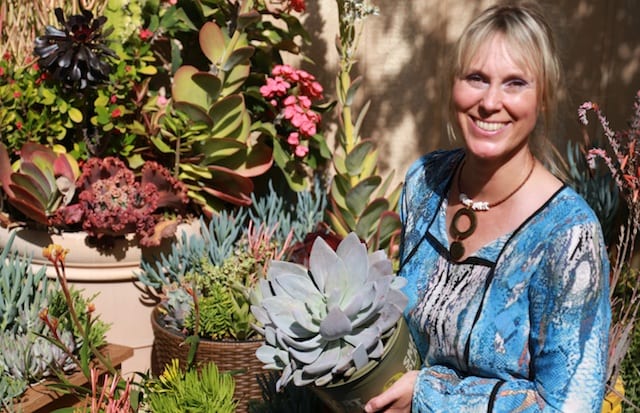
New Succulents
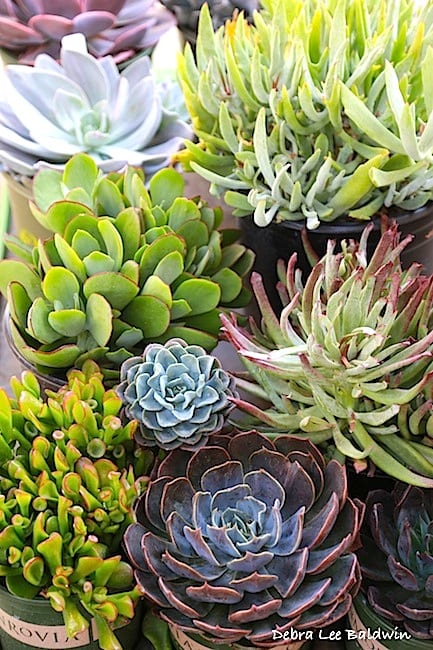 New Succulent Plant Introductions
New Succulent Plant Introductions
Let's say you're in the nursery business and can crossbreed popular succulents so their offspring combine their parents' most desirable traits. What would you aim for? That's what I found out on a recent visit to Altman Plants, the largest grower of succulents in the US. I was there to photograph Altman's spring succulent introductions---new beauties now available (or soon to be) through Monrovia and other distributors, and also via Altman's online mail-order nursery. The ones shown here were created by Altman staff hybridizer Renee O'Connell, who specializes in echeverias and other nonspiny varieties. Renee's own descriptions, below, are in green.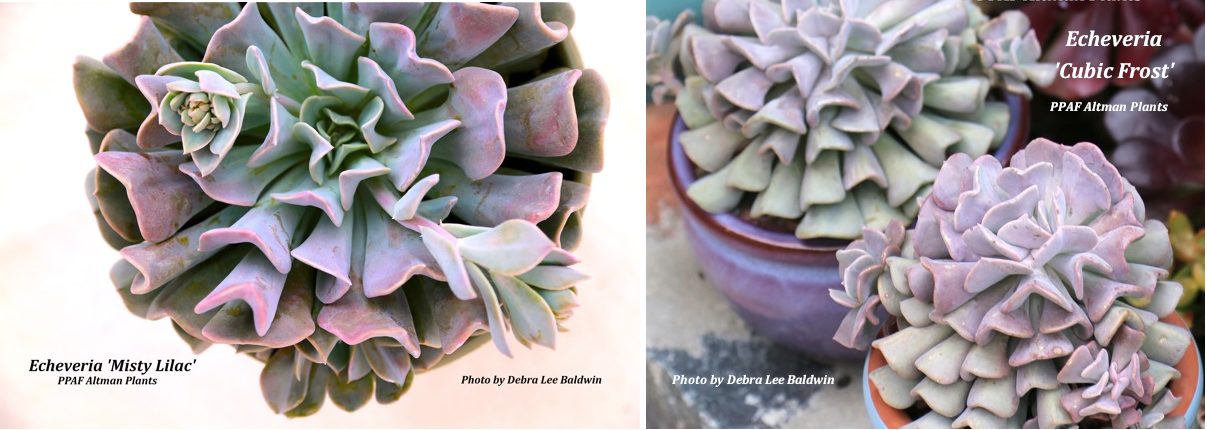
Echeveria 'Misty Lilac': This plant is similar to ‘Cubic Frost’, but is a much larger version. (DLB: 'Misty Lilac' at left is about 18 inches in diameter; 'Cubic Frost' at right, half that size.)
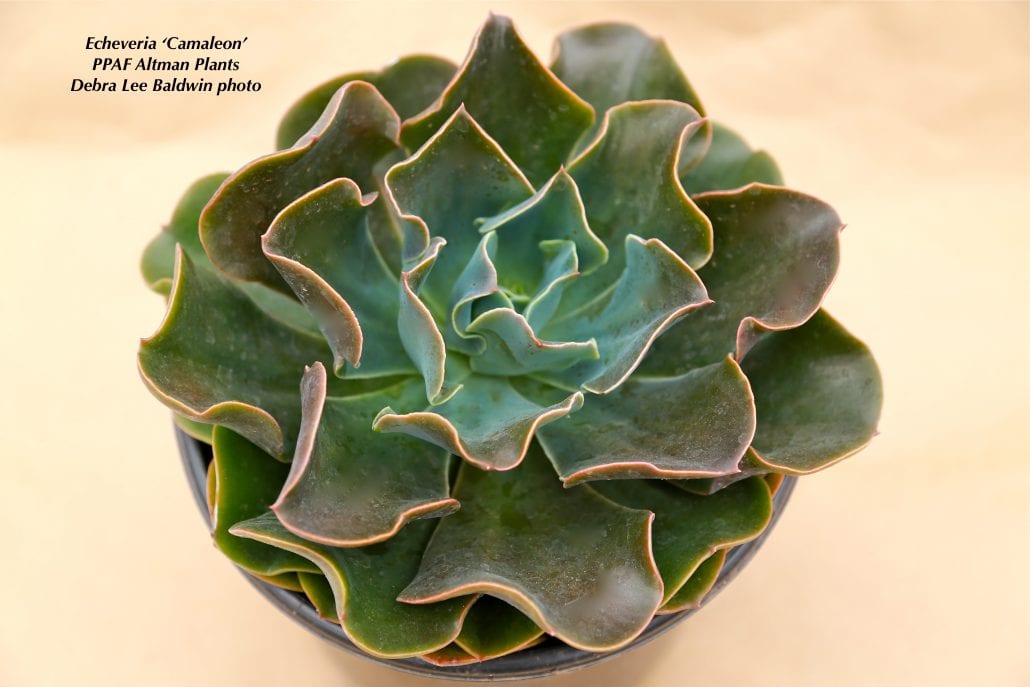
Echeveria 'Camaleon': The intent of this cross was to create a dark echeveria with these odd colors, but what's interesting is that ‘Camaleon’ (Spanish for chameleon) has what I call an “ephemeral variegation.” For several months the new growth is often yellow, lime green, and shades of blue green, sometimes blushed pink in high light, before reverting to its unusual dark hues.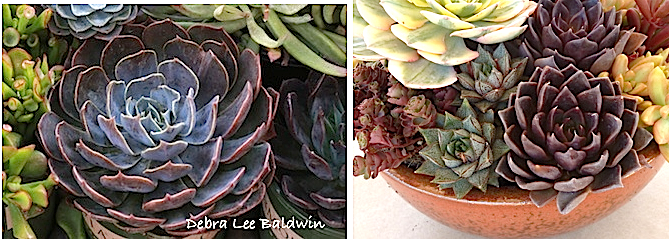
Echeveria 'Dark Moon': The intent of this cross was a variably colored Echeveria ‘Black Prince’ with improved resistance to pathogens. (DLB: 'Dark Moon' is at left, 'Black Prince' at right.) 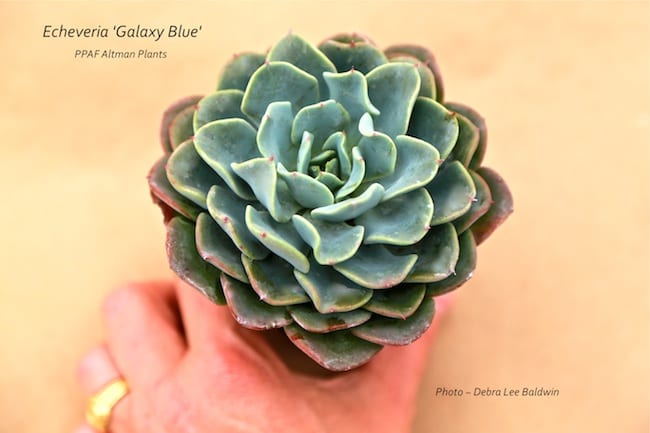
Echeveria 'Galaxy Blue': This cross was done to create a undulate, offsetting echeveria. ‘Galaxy Blue’ is versatile in that it looks good in a 2.5” pot, has already begun to offset at 3-1/2 inches in size, and is equally attractive in a 2-gallon pot.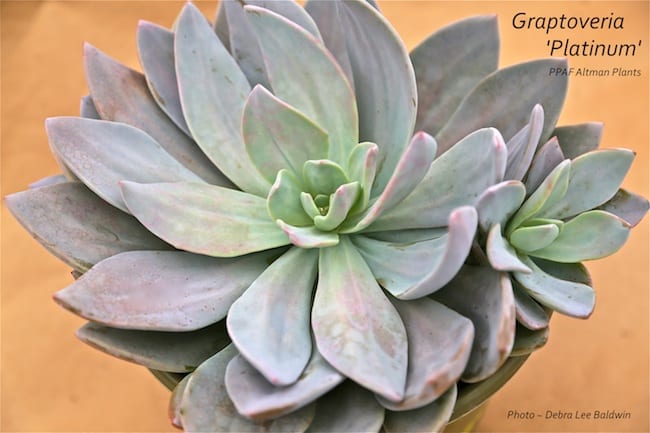
Graptoveria 'Platinum': This was the result of wanting to create a very white plant with an attractive morphology. (DLB: "Morphology" refers to a plant's shape or form. Succulents in the genus Graptoveria are intergeneric crosses of Graptopetalum and Echeveria.)
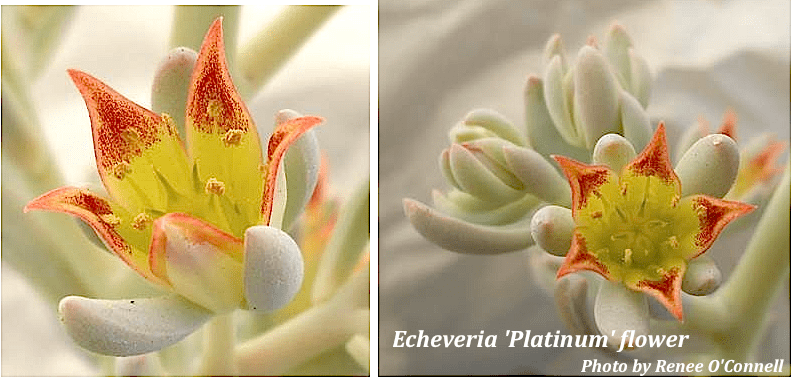
‘Platinum’ is an attractive plant that has proven landscape worthy in temperate climates, but for me, its unusual, very delicately tinted flower is the pièce de résistance.
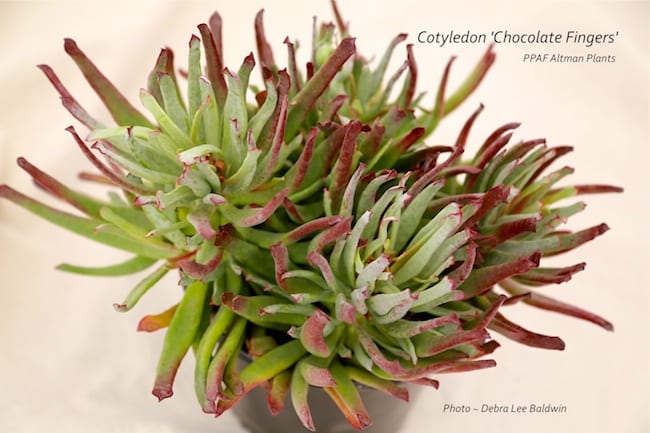
Cotyledon 'Chocolate Fingers': The intent of the cross that resulted in ‘Chocolate Fingers’ was to create a variable color for Cotyledon; something different than the shades of white or gray that are so prevalent.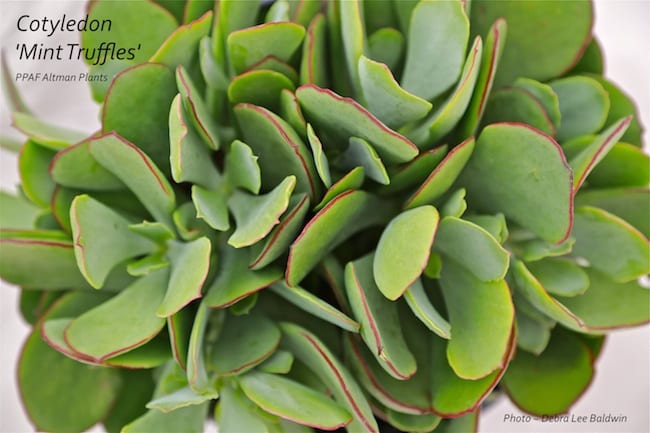
Cotyledon 'Mint Truffles': Unlike many other cotyledons, 'Mint Truffles' does not grow upward to become lanky, but spreads laterally in the landscape. The mint green leaves, margined with red, create an attractive accent for other plants in the landscape.
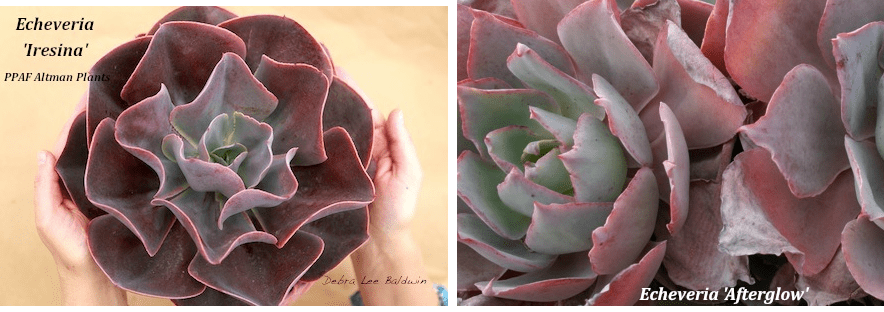
Echeveria ‘Iresina’: The goal was an ‘Afterglow’ type echeveria for the landscape with a more concentric morphology. 'Iresina', a lilac-majenta echeveria, produces large vermillion flowers. (DLB: 'Iresina' is at left, about 18 inches in diameter. 'Afterglow' rosettes at right are about 12 inches. Memo to self: Shoot 'Iresina' in bloom!)
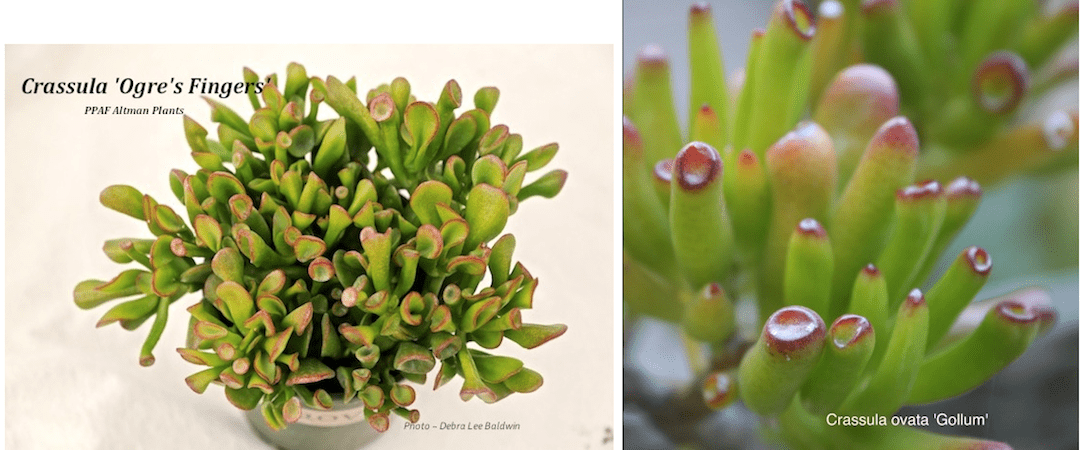
Crassula ‘Ogre’s Fingers’: An eccentric form of Crassula ‘Gollum’ with mind of its own! Can’t seem to quite make up its mind if it wants to make big “fingers,” flattened, fluted leaves or near-mushroom shapes, but is never boring. When grown in good light, leaf tips light up a glowing crimson, and fingers are translucent glowing green, especially when backlit by the sun. (DLB: 'Ogre's Fingers' is at left, 'Gollum' at right. Both are Crassula ovata (jade) cultivars.)


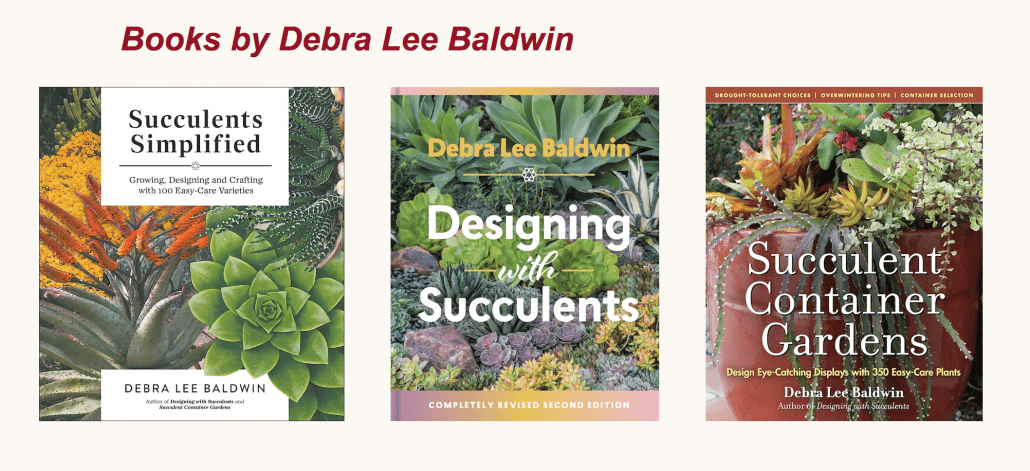
Is it possible t o get this beautiful succulents here in Botswana they will get here fine iI am crazy aabout your succulents
What about Echeveria galaxy green succulents, what is the height and width of mature plant.
I’m not familiar with that cultivar, sorry.
I just bought an Altman plant labelled Graptoveria April Dawn. I can find NO information about this plant online–only 1 photograph of a plant in bloom. Would love to know size, care–ANY info on this plant!
Hi Rick — I’m not familiar with that particular cultivar, but it’s doubtless similar to other graptoveria cultivars. They’re easy-grow plants that benefit from “hybrid vigor.” Same care requirements as most succulents https://debraleebaldwin.com/succulent-faqs/.
I also bought a plant named graptoveria April Dawn! Curious about the info on it too
Hi Melanie — I’m not familiar with that one. There are so many cultivars, and the names may not be consistent from one source to another. I’ll keep an eye out for it!
I’m curious about how these cultivars are produced and approved, at Altman or elsewhere. Do they typically test through multiple generations to ensure these traits will pass on reliably if new individuals are grown from seed? Too often I have seen varieties labeled as cultivars that do not actually produce offspring with the same attractive traits, so that growing from cuttings is the only viable option to reproduce their appearance.